Aplicación regional del agua
Para promover la colaboración y la cooperación entre los sistemas de abastecimiento de agua de todo el estado de Kansas, este programa trabaja con la Subvención para la planificación regional del agua del KDHE con el fin de proporcionar financiación para estudios preliminares de ingeniería.
FINANCIACIÓN
$2,000,000
máximo
Propósito
Consolidación
de dos o más sistemas
Calificar
COMPRUEBE SI SU COMUNIDAD CUMPLE LOS REQUISITOS
compruebe los programas de cualificación y mucho más
2025 Guidelines Coming Soon!
For 2025, the Regional Water Implementation Grant will provide up to a maximum of $2,000,000. The 50 percent match can come from local funds or in combination with funds from the KDHE Regional PWS Planning Grant Program.
Proyectos subvencionables
La financiación de este programa ayuda a promover la colaboración y consolidación de los sistemas de abastecimiento de agua en todo Kansas. Los gastos subvencionables incluyen:
Criterios de selección
La financiación del programa de Subvenciones para la Implementación Regional del Agua sigue los procedimientos del documento de Directrices para Subvenciones.
Las consideraciones clave incluyen:
Communities may apply for multiple CDBG categories but can only be awarded up to two projects total, with no more than one from a major category. Major categories include: Community Facilities: Large/Small, Blueprint to Build, Water and Sewer Infrastructure, and Regional Water Implementation. For example, a city can submit applications for a Housing Rehabilitation and a Community Facilities: Large Grants project. However, a city cannot apply for both a Large and Small Community Facilities project.
What is the public hearing process?
The local government must hold two public hearings to demonstrate that reasonable efforts have been undertaken to ensure involvement of citizens or citizen organizations throughout all stages of the program. A notice about the hearing must be published in a local newspaper with the widest circulation, and it must appear at least 5 full days before the hearing—not counting the day it’s published or the day of the hearing itself. These hearings must be held at a time and location convenient to potential or actual beneficiaries, with accommodations for non-English speaking residents and persons with disabilities. A sample public hearing notice is included in program guidelines.
First Public Hearing: Must be held at least 15 days before the CDBG application is submitted, and no earlier than 120 days. The purpose of the hearing is to inform citizens about the proposed project, including its location, total cost, activities, and beneficiaries. Community members must be given a chance to suggest other project ideas and share their input, and the local governing body should carefully consider this feedback before submitting the application. The total project funding and CDBG amount requested must match what appears in the public hearing notice.
Second Public Hearing: Must be held at the conclusion of the project, prior to close out to inform citizens of the project’s successful or unsuccessful completion, and to obtain input on the grantee’s performance.
Yes, all CDBG-funded projects are federally required to have an environmental review. The Environmental Determination of Level of Review form must be submitted with the application. This will inform Commerce as to what level of environmental review you will undertake for your project if awarded.
Post-award, the city or county must conduct a full environmental review of the project, even for small projects that don’t require construction. This responsibility cannot be delegated and the cost to conduct the review must be paid with local funds. Project activities may not begin until after Commerce issues the environmental release of project funds.
Sí, puede, pero al menos 10% del partido debe ser en efectivo.
Las ciudades y condados pueden calificar utilizando la hoja de cálculo de datos del Censo 2015 del HUD para determinar su porcentaje actual de LMI que el HUD está reportando como calificador. Si la comunidad no cumple con nuestro requisito de 51 por ciento de LMI basado en los datos de ese documento, pueden optar por hacer una encuesta basada en los ingresos de la ciudad o condado que se beneficia del proyecto. En ocasiones, los proyectos no benefician a toda la ciudad o condado, lo que da lugar a un beneficio para la zona objetivo. Para cumplir el requisito del 51% de LMI para este tipo de proyecto, se requiere una encuesta basada en los ingresos de los beneficiarios sólo en esa zona. Se puede solicitar al equipo de CDBG información adicional sobre cómo realizar una encuesta basada en los ingresos.
Mapa del escaparate comunitario
Vea otras comunidades que han recibido financiación en años anteriores
Calificar
LMI ayuda El programa Community Development Block Grant (CDBG) exige que cada actividad financiada por el CDBG beneficie principalmente a personas con ingresos bajos o moderados (LMI), contribuya a la prevención o eliminación de barrios marginales o deteriorados, o satisfaga una necesidad de desarrollo comunitario que revista especial urgencia.
| Personas en Familia |
Límite de ingresos familiares LMI*. |
|---|---|
| 1 | |
| 2 | |
| 3 | |
| 4 | |
| 5 | |
| 6 | |
| 7 | |
| 8 |
*LMI calculations are from the 2020 Census and LMI by household are from 2024 HUD Section 8. Final LMI will be confirmed upon application review.
Buscar asistencia
La asistencia de un profesional con experiencia en subvenciones CDBG puede ayudarle a agilizar y reforzar su solicitud. Una parte o la totalidad de los costes de contratación de la ayuda pueden correr a cargo de su indemnización.
Encuentre profesionales en su zonaAplicación
(.) ver todos los recursos AplicaciónApplication Deadline: November 14, 2025 or until funds are depleted
Reciba notificaciones para este año y el próximo